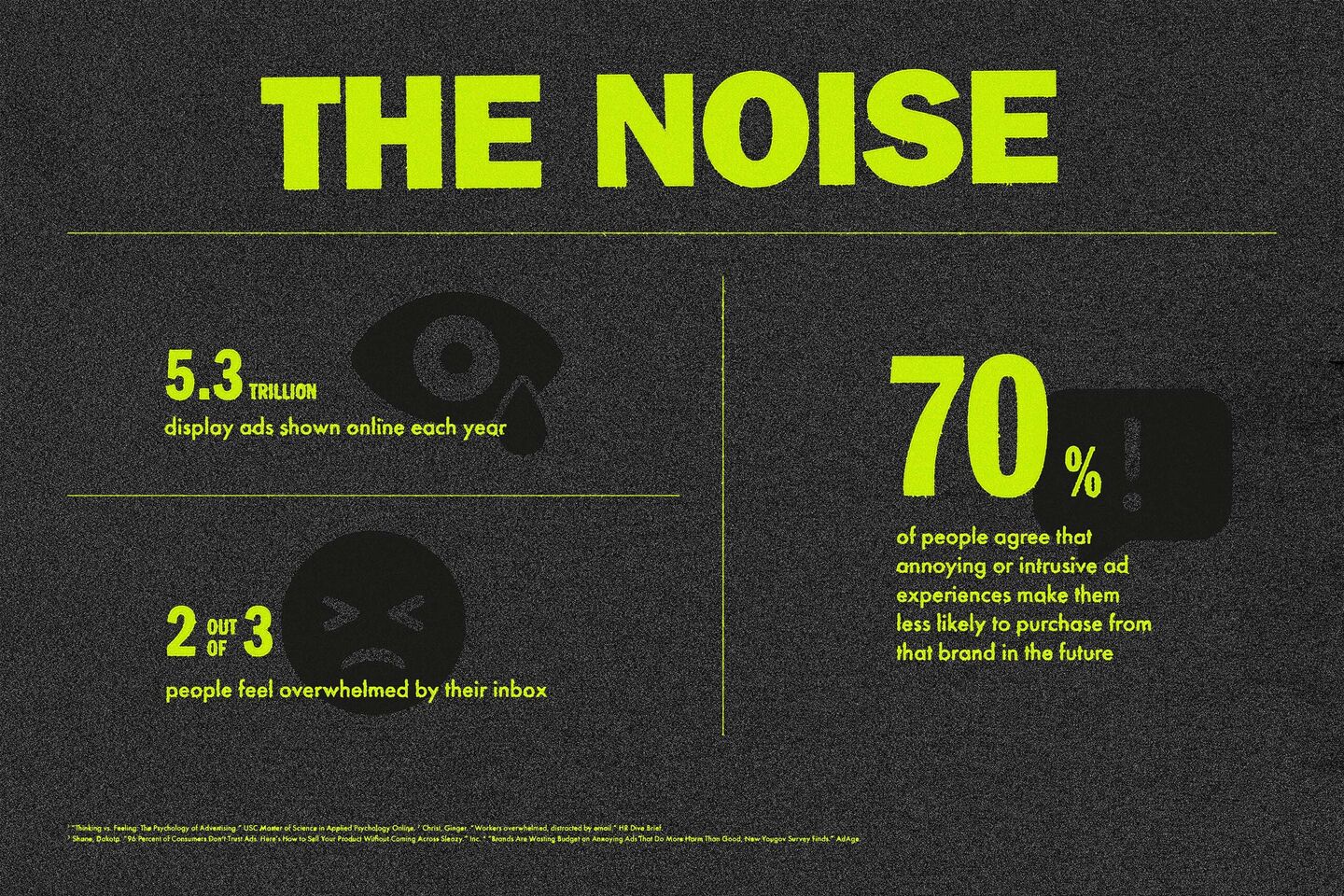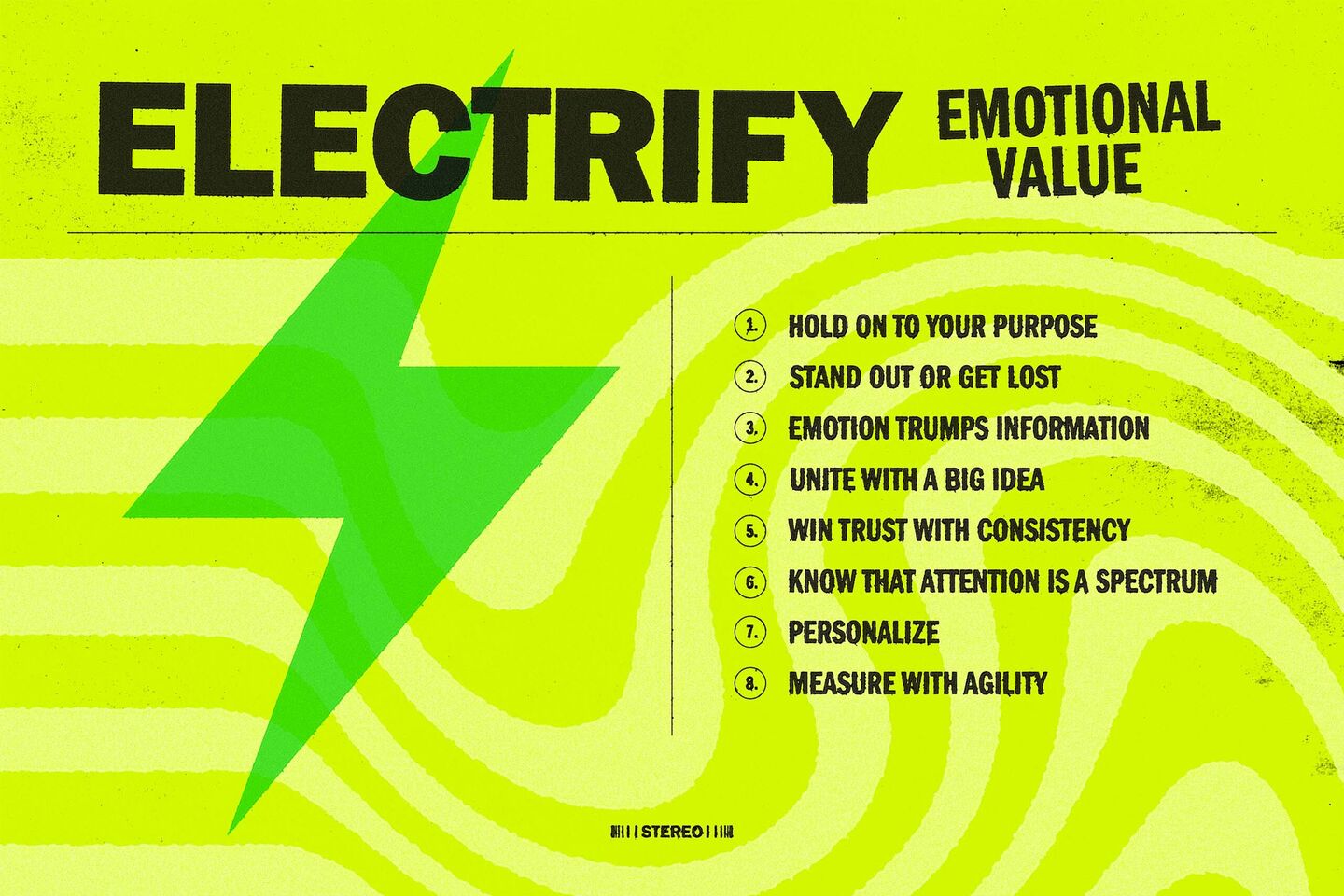Ideas
Going electric: Bob Dylan and the power of brand strategy

Ideas

Stratocaster slung over his shoulder, Bob Dylan stood in the wings of the main stage at Newport Folk Festival 1965 and waited for his turn to play. Only 24 years old and already a household name, Dylan seemed to be at the peak of his powers. The crowd thrummed with excitement, and their roar of applause at Dylan’s entrance could be heard far beyond the bounds of the cramped municipal park that served as the festival grounds. Without offering a word of explanation, Dylan plugged in his amp, stepped in front of the mic, and changed the world of music forever.
“Bob Dylan going electric” is one of those punctuation marks in the history of popular music that proved so decisive that even non-fans recognize its shorthand, like “Elvis from the waist up” or “the Beatles play the Ed Sullivan Show.” But it wasn’t Dylan’s performance that made the moment such an important one, nor was it his acoustic-or-die audience’s famously chilly response. It was how his embrace of a new musical medium literally amplified his values and provided a bold new rearticulation of his unique purpose, voice, and vision—or, as we might say today, his “brand.”
As companies allocate more and more resources towards performance and account-based marketing, Dylan’s electric moment serves as a crucial reminder of brand’s fundamental role in amplifying the effectiveness of these strategies. After all, success in modern marketing requires more than just technology-enabled tools. For that, you’ll need to employ a breadth of marketing techniques, investing carefully in both performance and brand to provide the best possible experience for your prospects.
Cut through the noise
Attention was already a finite resource in 1965: today, it’s even more precious. For better or worse, there’s a limit to how much a person can focus on at any given time, especially in a media landscape defined by information overload. With over 5.3 trillion display ads shown online each year, it’s harder than ever to catch the attention of valuable prospects—and harder still to do it in a way that they actually enjoy. According to a recent study, over two-thirds of people reported feeling overwhelmed by their inbox, and a whopping 96% of those polled expressed their belief that advertisers fail to practice integrity. It’s no surprise, then, that over 70% of people agree that annoying or intrusive ad experiences make them less likely to purchase from that brand in the future.

Echoing their frustrations, legislatures have pushed for new privacy laws and more opportunities for consumers to opt out of app tracking, leading to a gradually diminishing pool of third-party data. Further complicating this state of affairs are the rise of AI and SGE (Search Generative Experience), both of which are on track to severely limit the efficacy of SEO marketing.
As the noise of an oversaturated market gets louder, it becomes even more essential that marketers amplify their brands to cut through the static and connect with prospects. The most successful impressions are the ones that can most clearly be heard among the din: striking, trustworthy, and memorable.
Know the scene
In such a challenging market, nothing is straightforward. Facing mounting levels of competition, commoditization, and complexity, it’s imperative that brands exercise a clear understanding of the terrain. (Bob Dylan couldn’t have revolutionized a music scene that he didn’t already know inside and out.) A successful approach will make use of brand and performance marketing, with each strategy specially tailored to respond to the particular set of conditions that characterize today’s marketing landscape:
1. Stand out against the competition. In a market crowded with competitors, a strong brand strategy is key to clarifying your product’s unique value. Performance marketing will get your brand out there, but you’ll only see traction if prospects who encounter your brand in the wild understand what makes you different and why they should care.
2. Build trust in complexity. The more information that’s available to consumers, the more complex each buying decision becomes. Making a final purchase can feel like going out on a limb, especially in shopping categories that are difficult to understand or require technical expertise. It’s brand’s job to develop the kind of trust that enables prospects to feel confident in those decisions, while it’s up to performance strategy to sequentially meet buyer requirements, providing a series of individual touchpoints that each play a specific role in delivering information to help the buyer feel secure enough to make a purchase.
3. Widen the net. To compete in a highly commoditized market, you’ll need to make your brand’s appeal as broad as possible, capturing the attention of more leads and bringing them into your sales funnel without losing the specificity that distinguishes you from the competition. That way, performance marketing is primed to step in and tailor messages to the personalized needs of each prospect, moving them towards action.
Go electric
When Dylan electrified his sound, he electrified his audience and grew it in the process. Even in an era defined by change, people make decisions the same way they always have, by weighing a combination of rational and emotional inputs. More often than not, it’s emotion that rules the day: one Nielsen study found that ads that generated an emotional response were responsible for a 23% lift in sales volume. And that’s not only true for B2C brands: more than 80% of polled B2B buyers reported that their emotional response to a brand plays a key role in buying decisions.

To succeed in the modern market, brand strategy and performance marketing need to work together as more than the sum of their parts. Here are some new rules for electrifying your brand with emotional value:
1. Hold on to your brand purpose. Help prospects make easier decisions by anchoring your brand with a strong mission and clear set of values.
2. Stand out or get lost. Cut through the clutter with bold, distinctive ideas.
3. Emotion trumps information. Create stories that resonate on a human level.
4. Unite with a big idea. Rally around a single powerful idea that informs and inspires execution across all channels.
5. Win trust with consistency. Be sure to maintain a consistent brand experience across all touchpoints.
6. Know that attention is a spectrum. Recognize that engagement can happen in a variety of contexts, from brief encounters to deeper and more sustained experiences.
7. Personalize. Identify subsegments or audience communities not just to get your product in front of the right people, but to show them how your brand is uniquely equipped to meet their needs and improve their lives.
8. Measure with agility. Rather than simply measure mechanical metrics (impressions, engagement rates, cost-per-click etc.), take a more dynamic perspective that allows you to consider audience behavior, motivations, values and experience. This two-way feedback allows you to learn more about who you’re talking to and build stronger relationships accordingly.
Brand and performance marketing: a force multiplier
The appeal of performance marketing lies in its promise to provide concrete metrics for marketing efforts. But measuring performance alone provides marketers with only a small part of the picture, especially in a highly saturated market in which a strong brand can make the difference between success and failure. In a world where attention is scarce and competition is fierce, marketers need to plug in to the amplifier of a strong brand strategy to distinguish themselves from their rivals and spark an emotional connection in their audience. Like Dylan leading his bandmates, we’re at our best when our brand and performance marketing strategies work in sync, each bringing their unique strengths to a unified, electrified whole. The times, they are a-changing—and it’s up to us to make sure our methods change with them.
About the Author
Andrew Gibson is VP, Strategy + Brand for Langrand. His driving force is to turn complex categories into clear growth strategies through the power of brand and business strategy.